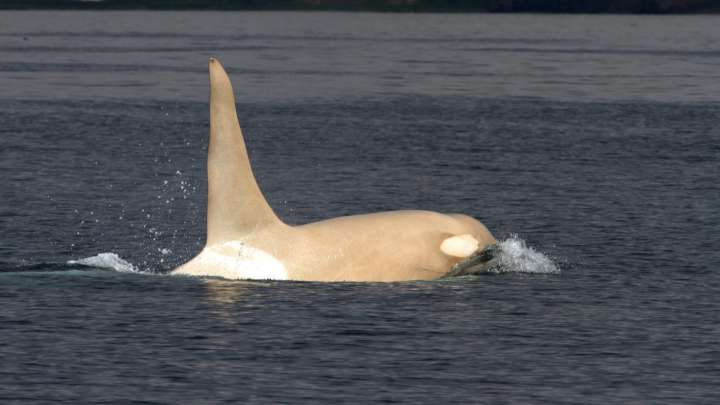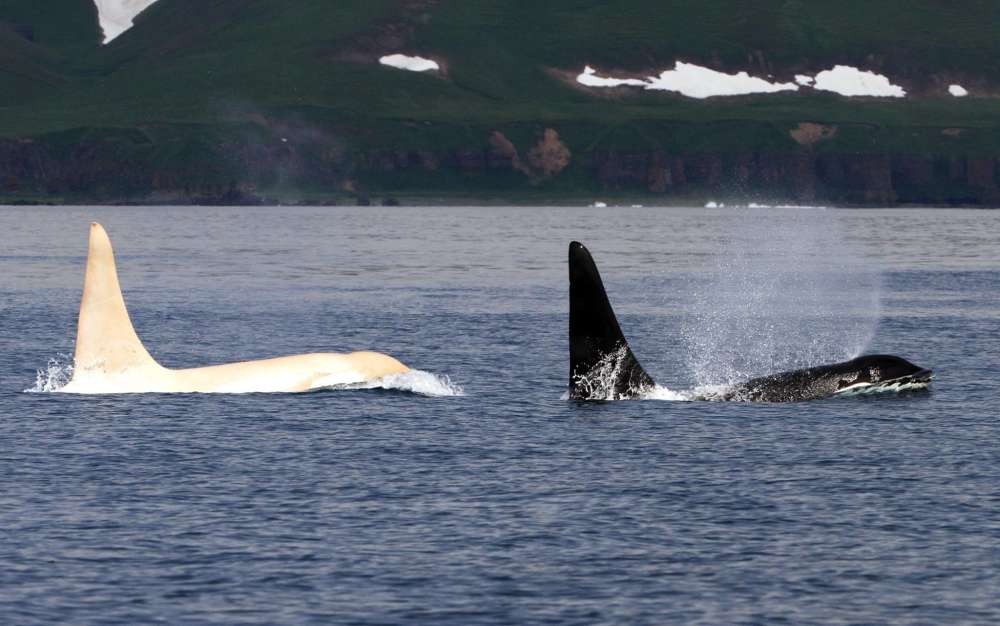
Orcas, sometimes known as “killer whales,” are generally black and white in appearance, but many white orcas have been observed in the waters around Russia’s Kuril Islands in the last six years or so. Now, the lone white adult orca sighted so far, called “Iceberg,” has been spotted again in the same area, together with at least four additional younger orcas.
The 22-year-old whale is part of a small group of extremely uncommon white orcas. Only one out of every 10,000 killer whales is totally white, and researchers on the opposite side of the planet in Antarctic seas — a hotspot for orca pods – may never see one in the wide Southern Ocean. Fortunately, keen observers have been following the Northern Hemisphere’s white pod for quite some time.
Worse, it may indicate that this pod is becoming dangerously inbred. According to Erich Hoyt, a member of the Far East Russia Orca Project (FEROP) and a member of the International Union for the Conservation of Nature’s (IUCN) specialist cetacean group, “having five – or up to eight – in one area of the Russian north-western Pacific, is an indication that there may well be inbreeding issues there.”
Although it’s unclear why they’re inbreeding and keeping their white hue, human activities might be to blame. “If a few females are caught for aquariums or killed for other reasons, you may really put the breeding unit in peril,” Hoyt warned, implying that the pod may be forced to inbreed in order to live.
Chediak-Higashi syndrome, a genetic condition that produces albinism as well as an increased sensitivity to respiratory infections and nervous system problems, is one possible reason of the white tint. This condition was discovered in a captive white orca named Chimo, who died at the age of four.

